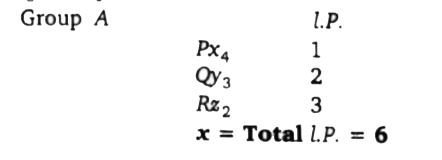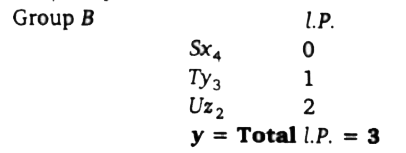There are two groups of compounds A and B. Groups A contains three compounds Px4,Qy3,Rz2. Groups B also contains three compounds Sx4,Ty3,Uz2. Hybridization of each central atom of group A compounds is same as that of iodine in IBrCl− while in group B compounds it is same as that of iodine IBrCl+. Substituents X, Y and Z exhibit covalency of one in ground state. Then find the value of x/y.
Where, x and y are total number of lone pair present at central atoms of compounds of group A and B respectively.
The correct Answer is:2
I−3⇒sp3d
Group A 
AsF+4⇒sp3
Group B 
Topper's Solved these Questions
Similar Questions
_CHM_E01_012_Q01.png)
Number of hydroxyl group in compound Y isView SolutionConsider the following three compounds (i)AXn−2n, (ii)AX3n and (ii)AXn+4n, where central atom A is 15th group element and their maximum covalency is 3n. If total number of proton in surrounding atom X is n and value of n is one, then calculate value of x3+y2+z2 . (where x, y and z are total number of lone pair at central atom in compounds (i), (ii) and (iii) respectively.
View Solution
Knowledge Check
- Question 1 - Select One
The group of heterocylic compounds is:
APhenol, FuraneBFurane, ThiopheneCThiophene, PhenolDFurane, Aniline - Question 2 - Select One
The compound which has one isopropyl group is −
A2,2,3,3-TetramethylpentaneB2,2-DimethylpentaneC2,2,3, TrimethylpentaneD2-Methylpentane - Question 3 - Select One
Which member of group 13 does not exhibit the group valency in its compounds?
ABoronBAluminiumCGalliumDThallium
Consider the following three compounds (i)AXn−2n, (ii)AX3n and (ii)AXn+4n, where central atom A is 15th group element and their maximum covalency is 3n. If total number of proton in surrounding atom X is n and value of n is one, then calculate value of x3+y2+z2 . (where x, y and z are total number of lone pair at central atom in compounds (i), (ii) and (iii) respectively.
View SolutionConsider the following three compounds (i)AXn−2n, (ii)AX3n and (ii)AXn+4n, where central atom A is 15th group element and their maximum covalency is 3n. If total number of proton in surrounding atom X is n and value of n is one, then calculate value of x3+y2+z2 . (where x, y and z are total number of lone pair at central atom in compounds (i), (ii) and (iii) respectively.
View SolutionCompounds of Group 17
View SolutionWhich of the following compounds does not contain an -OH group
View SolutionWhich of the following compounds does not contain an -OH group
View Solution

